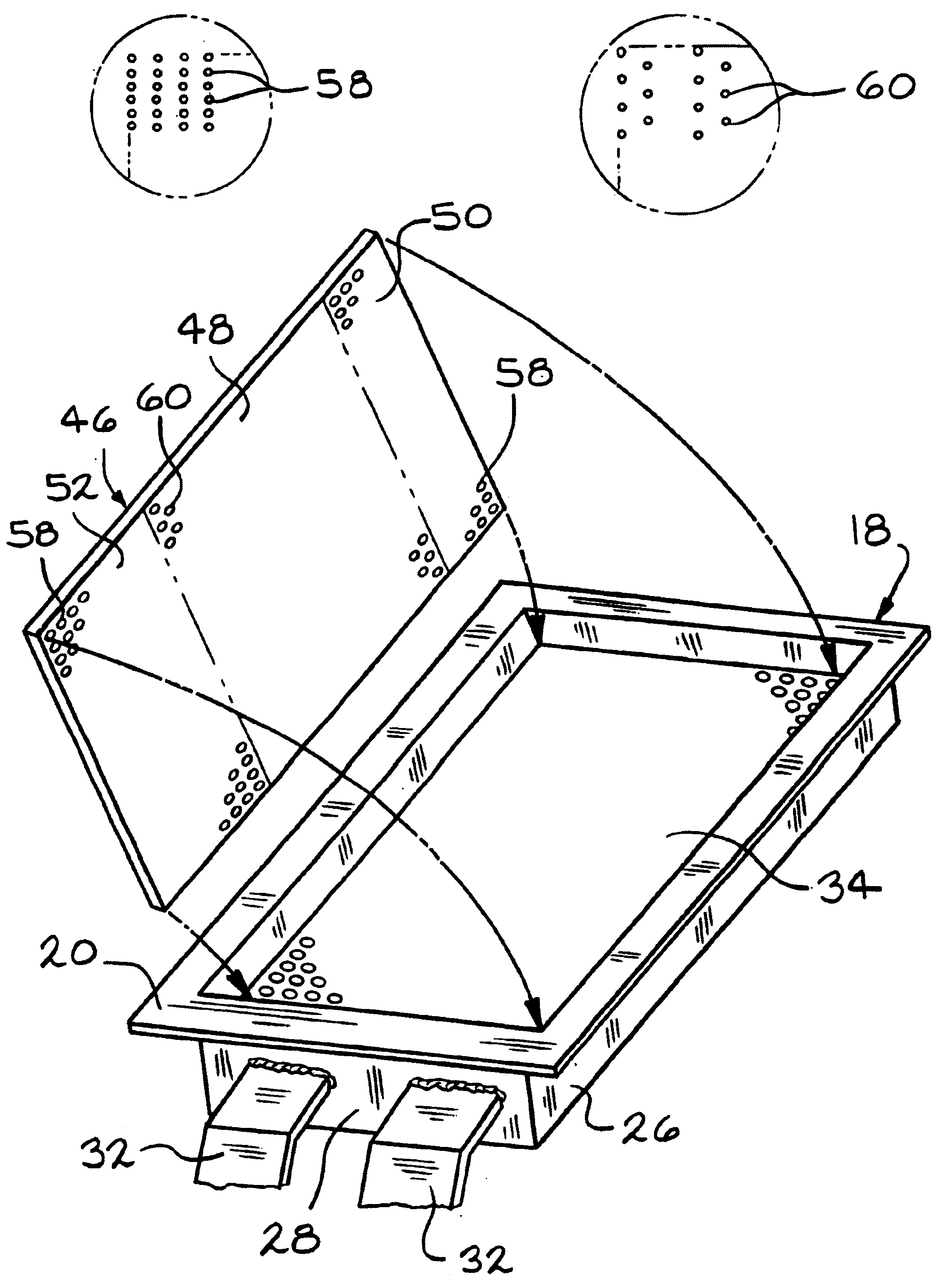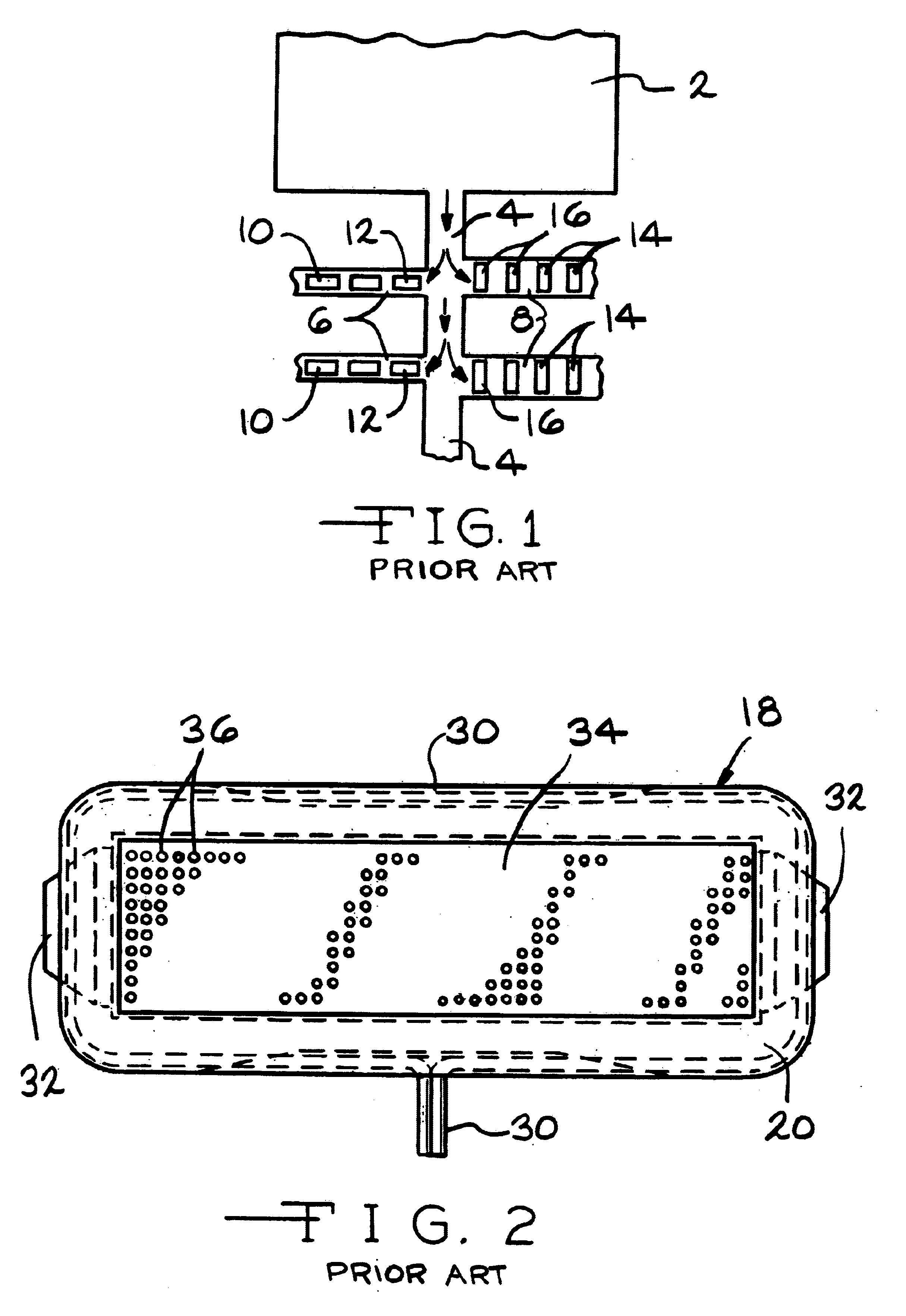Screen for fiberizing bushings and method
a technology of fiberizing bushings and fibers, which is applied in the direction of lighting and heating equipment, manufacturing tools, furniture, etc., can solve the problems of not being able to meet the needs of non-channel positions, the temperature profile of the tip plate is greatly improved, and the efficiency of the tip plate is greatly improved. , to achieve the effect of reducing the variation of the fiber diameter of the fiber, and improving the temperature profile of the tip pla
- Summary
- Abstract
- Description
- Claims
- Application Information
AI Technical Summary
Benefits of technology
Problems solved by technology
Method used
Image
Examples
Embodiment Construction
[0025]In the direct melt method for making glass fiber, a glass melting tank converts glass batch to molten glass and conditions the glass to remove most of the entrained gasses and to reduce the temperature below that used to melt the batch. Molten glass is removed from the melting tank or refining chamber through a submerged throat and into one or more channels which confines and transports the glass towards bushing legs in which a plurality of spaced apart bushings converts the molten glass into glass fiber. While almost any glass can be made into fiber, the most commonly used is well known E type glass which is a lime-alumina borosilicate. It is also known to use sodium boro-silicate glasses to make fiber. The present invention is usable with any molten material, including any organic materials and any glass compositions that can be made into a fiber using a fiberizing bushing.
[0026]Referring to FIG. 1, which is a horizontal cross section taken below the glass line of a portion ...
PUM
| Property | Measurement | Unit |
|---|---|---|
| thickness | aaaaa | aaaaa |
| thickness | aaaaa | aaaaa |
| thickness | aaaaa | aaaaa |
Abstract
Description
Claims
Application Information
 Login to View More
Login to View More - R&D
- Intellectual Property
- Life Sciences
- Materials
- Tech Scout
- Unparalleled Data Quality
- Higher Quality Content
- 60% Fewer Hallucinations
Browse by: Latest US Patents, China's latest patents, Technical Efficacy Thesaurus, Application Domain, Technology Topic, Popular Technical Reports.
© 2025 PatSnap. All rights reserved.Legal|Privacy policy|Modern Slavery Act Transparency Statement|Sitemap|About US| Contact US: help@patsnap.com



